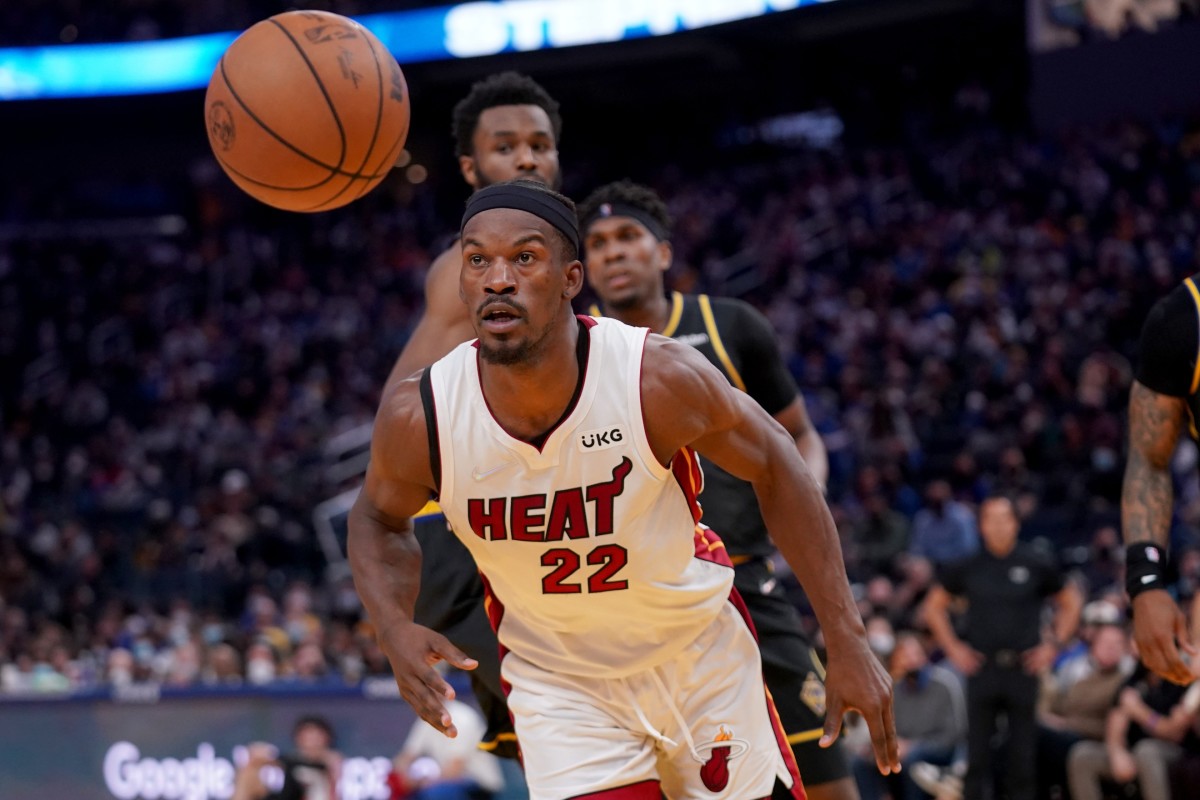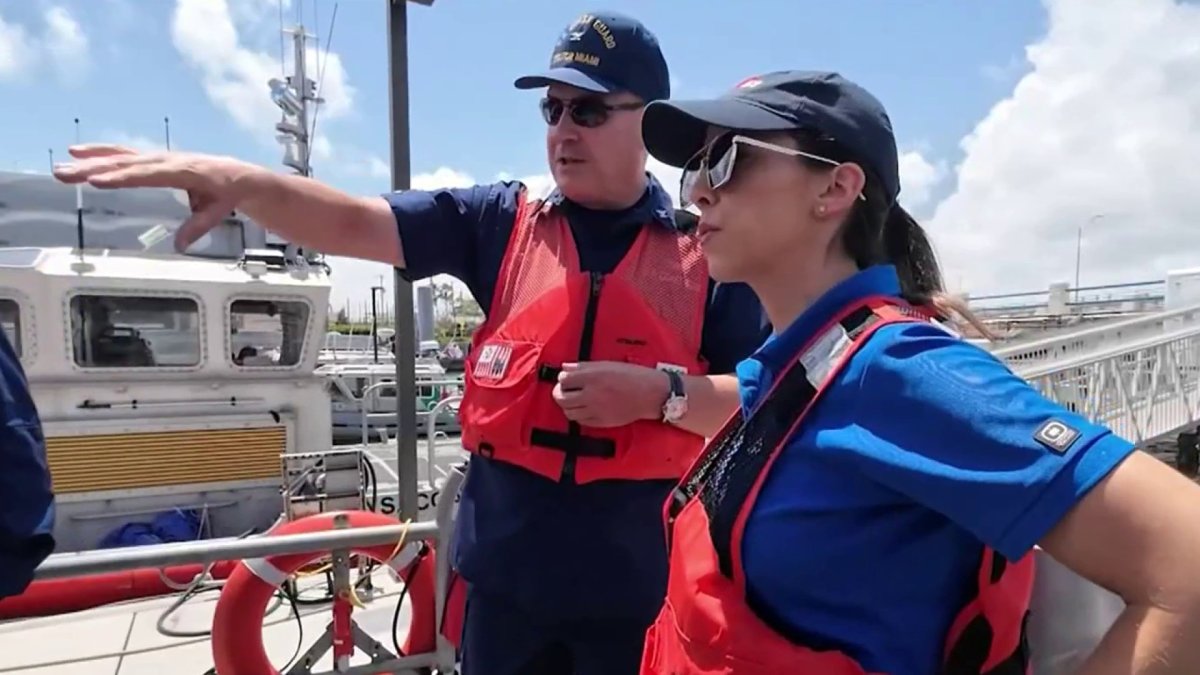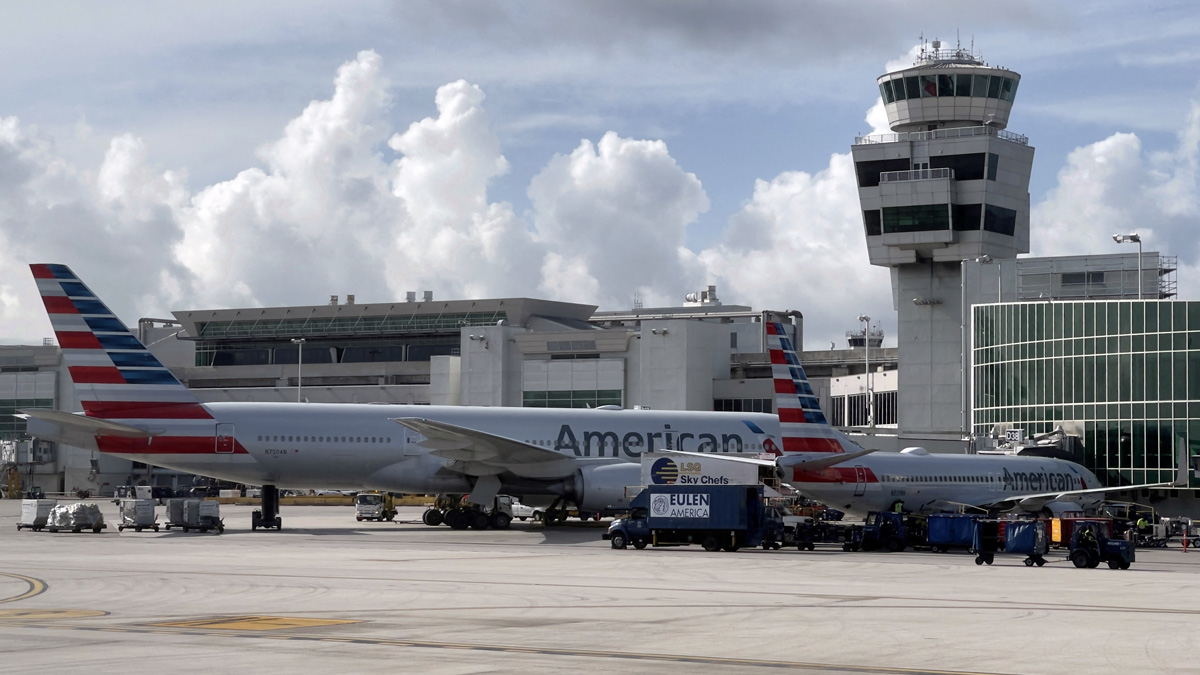How the Florida Gators, FSU football and Miami became The Big Three
The 2001 college football season ended the same way most of them had over the previous two decades: with Florida’s Big Three dominating the sport.
Led by arguably the most talented roster ever assembled, Miami won its fifth national championship by crushing Nebraska in the Rose Bowl. The Hurricanes would have been playing the Gators, but Florida was upset by Tennessee in the regular-season finale. Instead, the Gators settled for third in the country — their 10th top-10 finish in 11 years.
Though Florida State had a down year, its No. 15 ranking would have been a success at most other schools. Besides, the Seminoles had finished in the top five in each of the previous 14 seasons and played in the last three national title games (winning one).
Led by legendary coaches and homegrown superstars, UF, FSU and Miami had combined for an astounding eight national championships and 25 other top-five finishes over 19 seasons.
“Florida was the center of the college football universe,” former Gators receiver Chris Doering said.
Not anymore. The Big Three is broken.
After placing at least a pair of teams in the top 10 every year from 1987-98, the Big Three has failed to do so in nine consecutive seasons. None finished in the top 10 in either of the last two. The programs’ eight-year national title drought is the longest since Miami won the state’s first in 1983, and last fall’s combined 18-19 record was their worst since 1976.
The reasons for the Big Three’s rise and fall are complex, according to more than two dozen coaches, former players, analysts and other experts interviewed by the Tampa Bay Times. They range from the obvious (coaching hires) to the uncontrollable (population shifts), from nine-figure investments to four-figure stipends, from NCAA sanctions and TV networks to a visionary with grass seed and a watering can.
And they all lead into one overarching question — one the Times has spent the offseason trying to answer.
Can Florida, Florida State and Miami be the Big Three ever again?
Right people
To understand the dismal present and uncertain future of Florida’s Big Three, you first must understand the factors that fueled the schools’ glorious past: the right people with the right approach at the right time.
The right people started at the top with larger-than-life head coaches. Howard Schnellenberger won a national title at Miami, resurrected Louisville and built Florida Atlantic from the ground up. Jimmy Johnson led the Hurricanes to the 1987 title before winning two Super Bowls with the Cowboys. Dennis Erickson claimed a pair of championships at Miami, then earned coach of the year honors at three different Pac-12 schools.
“I think it’s one of those perfect storms, really,” said Jeremy Swick, the College Football Hall of Fame’s curator and historian. “It’s tough to get back-to-back legendary coaches.”
Miami did it back-to-back-to-back.
The Seminoles and Gators had their own giants. FSU’s Bobby Bowden (1976-2009) took over a program on life support and left as the second-winningest coach in major college football history. From 1990-2001, Steve Spurrier won more games with the Gators than anyone ever, then accomplished the same feat at South Carolina.
But that’s only part of the coaching talent that elevated the Big Three.
Miami’s staffs from 1983-2001 had at least 16 assistants who became future head coaches at major colleges or in the NFL. Add in assistants from Spurrier’s UF tenure and FSU’s 1987-2000 peak, and the figure grows to 27.
Their collective numbers: 223 Division I-A seasons, 68 top-25 finishes and 39 conference titles, plus seven playoff appearances over 29 years in the NFL.
Larry Coker (Miami assistant, 1995-2000), Bob Stoops (Florida, 1996-98) and Ed Orgeron (Miami, 1988-92) went on to win national titles as head coaches, while Mark Richt (FSU, 1985-88 and 1990-2000) and Tommy Tuberville (Miami, 1986-93) came close.
Three of UF’s most damning losses last fall were to LSU’s Orgeron, Kentucky’s Mark Stoops and Georgia’s Kirby Smart. Orgeron and Stoops both won championships as Miami assistants, while Smart was a grad assistant at FSU just after the Bowden dynasty crested.
“These things just don’t happen by chance…” said CBS Sports analyst Kevin Carter, a standout Gators defensive end under Spurrier. “Coaching trees are real.”
The Big Three’s coaching trees are impressive enough on their own. But they flourished because they were planted with the right approach at the right time.
Right approach, right time
Before the Big Three became the Big Three, Florida college football was irrelevant. The Seminoles and Hurricanes considered dropping the sport, while the Gators spent their first 50 years in the SEC without ever winning the league.
Not surprisingly, the Big Three didn’t have much pull with local talent.
“When colleges would come in here back in the day, they could just come away with basically anybody they wanted,” said Larry Blustein, who has been scouting south Florida prospects for more than 50 years.
That was fine with Miami. Of the 94 players on the 1973 Hurricanes, 56 were from other states.
Schnellenberger vowed to change that.
He committed to controlling the recruiting territory of what he called “the state of Miami.” When Schnellenberger visited in 1983, the fabled showman brought grass seed and a watering can to Tampa Stadium to annex the region as part of his domain.
“He decided if we got the talent in about a one-hour radius of the University of Miami … that we were going to win,” said Richt, who played for him at The U and coached the Hurricanes from 2016-18. “There was enough talent to win and win big.”
There was enough talent because the state had been booming for decades.
Florida’s population growth in the 1950s (79%) is the highest rate of any state in any decade over the last century, according to the U.S. Census. Florida was the second-fastest growing state in the 1960s (37%) and third-fastest in the 1970s (44%) before slowing every decade since.
More importantly, the state was changing in a way that could boost the Big Three.
Though migration was (and still is) the main source of growth, higher birth rates played a larger role in the shift of the 1950s and 1960s, said Stefan Rayer, the population program director of UF’s Bureau of Economic Business and Research. From 1960-80, the number of Floridians age 15-17 more than doubled (from 214,000 to 483,000) according to the Census.
That means the state wasn’t just growing with retirees and young professionals. It was growing with children.
Children who could become football players.
In 1971, Florida had 25,000 boys participate in high school football. That figure ranked 13th nationally behind states like Indiana, Minnesota and Wisconsin, according to the National Federation of State High School Associations. By 2001, Florida had 35,000 players and was up to sixth.
The Sunshine State had a history of quality prep football players dating back to Duval winning the state’s first high school national title in 1921. But when Schnellenberger started fencing in the state of Miami decades later, Florida finally had quantity, too, plus warm weather conducive to year-round training.
“The big thing at Florida and Florida State isn’t as much being able to recruit players as it is selection,” Bowden told the Tampa Tribune in 1985. “There is usually enough talent to go around in this state and we’re both usually going to get our share.”
That’s because the Big Three had another fortuitous timing advantage.
The camps and combines that help today’s coaches identify talent weren’t around yet. Prospects couldn’t get to know faraway programs through conference TV networks or social media; neither existed. Film didn’t travel instantly from a high school coach in Seffner to recruiters at Alabama or Ohio State.
“The recruiting world was a lot bigger at the time,” said 247Sports’ Bud Elliott, who co-hosts the FSU show, The Nolecast.
A bigger recruiting world favored schools with easy access to talent. The Big Three had that, plus one other vital edge: limited competition.
Half the SEC (including Alabama, Auburn and Georgia) faced NCAA sanctions during the 1990s. The ACC didn’t have a marquee brand besides FSU. That meant neighboring teams weren’t serious threats to invade. And because the University of Tampa had disbanded its program, UCF football was in its infancy and USF hadn’t kicked off yet, the Big Three and their legendary leaders had an exploding population all to themselves.
The right people had the right approach at the right time.
‘It’s our turn now’
Miami broke through first.
Schnellenberger’s local emphasis led to the state’s first national title in 1983. A team that had only 38 Floridians on its roster a decade earlier started 16 of them, including 11 from the state of Miami.
Florida State followed. The Seminoles finished in the top five every year from 1987-2000 thanks to a push from their transformational 1985 recruiting class. Of Bowden’s 29 signees, 22 were from Florida, including Seminoles Hall of Famer Odell Haggins and the iconic Deion Sanders.
NCAA sanctions kept the Gators a step behind, but they were coming.
The Big Three formally arrived with a 1988 Sports Illustrated cover that looked like a postcard from the Sunshine State. “Florida,” the headline read, “Home of the Best Talent and the Best Teams!!”
“Texas has had its turn,” future Miami great Lamar Thomas told SI. “It’s our turn now.”
Their turn truly began in 1991, a year after Spurrier took over the Gators.
Of the Tribune’s top 100 national prospects that year, 15 were Floridians. All but two signed with the Gators, Seminoles or Hurricanes.
Florida State added ACC defensive player of the year Derrick Alexander (Jacksonville Raines) and Pro/College Football Hall of Famer Derrick Brooks (Pensacola Washington). Miami landed another Bucs legend, Warren Sapp (Apopka). The Gators got CNN national defensive player of the year Ellis Johnson (Wildwood), All-Pro lineman Kevin Carter (Tallahassee Lincoln) and walk-on Chris Doering (Gainesville P.K. Yonge), who broke the SEC record for most career touchdown catches.
All from one class.
The onfield results from 1991 were even stronger. Miami won its fourth national title. FSU finished at No. 4, Florida at No. 7. It was the first time in college football history a single state placed three teams in the top seven.
They did it again three years later.
Onfield triumphs fueled even more in-state recruiting victories. The Big Three’s draw was so powerful that other schools gave up recruiting Florida.
“It was just a waste of time,” longtime national recruiting analyst Mike Farrell said.
More in-state recruiting victories led to even more onfield triumphs, which culminated in what was, by far, the greatest run of any state in the sport’s modern age.
From 1992-2002, Florida had a team in every national title game but one (1997). The Seminoles won it all in 1993 and were the wire-to-wire No. 1 team six years later. The Gators knocked off previously unbeaten FSU in the Sugar Bowl to claim their first national championship in 1996. When Miami obliterated the Cornhuskers for its fifth national title in 2001, the Hurricanes cemented an unprecedented era of state supremacy — one that showed no signs of slowing down.
“Nothing lasts forever,” said Joey Johnston, who spent a quarter century covering Florida college football for the Tribune. “But that seemed like it was going to last forever.
“It just sort of stopped.”
Coming Thursday on tampabay.com: Part II: How the Big Three became broken
Storied coaching trees
Some of the notable assistants from the Big Three’s 1991-2001 glory days who become successful head coaches:
Bob Stoops (Florida, 1996-98): College Football Hall of Famer beat FSU for the 2000 national title and is Oklahoma’s all-time winningest coach (190 victories).
Mark Stoops (Miami, 2001-03): 2018 SEC coach of the year needs two wins to pass Bear Bryant (60) for the most in Kentucky history.
Mark Richt (FSU, 1985-88, 1990-2000): Bobby Bowden’s longtime quarterbacks coach had seven top-10 seasons at Georgia and led Miami to the 2017 ACC title game.
Larry Coker (Miami, 1995-2000): Head coaching tenure ended poorly with the Hurricanes but did win the 2001 national title and nearly won it all the next year, too.
Sonny Lubick (Miami, 1989-92): Colorado State named its field after Lubick, the second-winningest coach in program history (108-74).
Chuck Pagano (Miami, 1986, 1995-2000): Went 53-43 with the Colts and took them to the AFC title game in the 2014-15 season.
Charlie Strong (Florida, 1991-94, among other stints): Failed as the head coach at Texas and USF but was a two-time Big East coach of the year at Louisville.
Ed Orgeron (Miami 1988-92): Won the 2019 national title with Joe Burrow and one of the greatest offenses of all time.
Tommy Tuberville (Miami, 1986-93): Nearly won the 2004 national title with a perfect season at Auburn and won a share of the AAC title a decade later at Cincinnati.
Greg Schiano (Miami, 1999-2000): Bombed with the Bucs, but his 76 wins at Rutgers are two behind Frank Burns for most in Scarlet Knights history.
Bob Pruett (Florida, 1994-95): Won the Division I-AA national championship in his first year at Marshall and coached the Thundering Herd to a perfect I-A season in 1999.
Hall of Fame high
One state boasting three Hall of Fame coaches at once (as Florida, Florida State and Miami did in the Big Three’s glory days) is rare but not unprecedented. Texas once had four overlapping Hall of Famers but couldn’t match the Sunshine State’s results:
Florida (1990-94)
Bobby Bowden, FSU: Two national titles, 15 top-five seasons with the Seminoles
Steve Spurrier, Florida: One national championship, never finished lower than 13th in a dozen seasons in Gainesville
Dennis Erickson, Miami: Two national titles, had five top-six finishes in six seasons at The U
Texas (1967-71)
Darrell K. Royal, Texas: Won/shared three national championships, recorded nine top-five finishes over 20 years with the Longhorns
Bill Yeoman, Houston: Winningest coach in Cougars history finished ranked nine times in 25 seasons
Gene Stallings, Texas A&M: Later won a national title at Alabama but had only one winning season in seven years with the Aggies
Hayden Fry, SMU: Eventual Iowa legend went 49-66 in 11 seasons with the Mustangs
• • •
Never miss out on the latest with the Bucs, Rays, Lightning, Florida college sports and more. Follow our Tampa Bay Times sports team on Twitter and Facebook.
/cloudfront-us-east-1.images.arcpublishing.com/tbt/I6BAUGNFHJFW5PVJDSP3SH6KSU.png)


